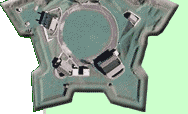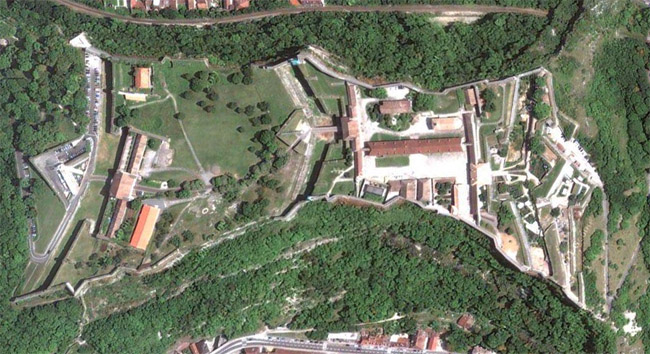 |
Tribes of Gauls are thought to have first settled at what became the city of Besancon around 1500BC. The exquisitely defensible spot of land that sits in an "ox-bow" of the Doubs River, with the Alps closing off the open end of the bow, was determined to be an obviously safe spot to hang out even without satellite imagery, since such technology was available only to Martians at the time.
|
|
A Roman gentleman by the name of Julius Caesar (100BC-44BC), of whom you may have heard, mentioned Besancon in his commentaries about his battles with the Gaulish tribes, around 58BC. Caesar noted that the town, which at the time was occupied by a smaller Gaulish tribe called the Sequani, had a wooden palisade around it. This made him feel obligated to give the town the name of Vesontio.
Over the following centuries, the town's name transmogrified through Besantio, Besontion and Bisanz, finally settling on its final name.
Besancon was part of Charlemagne (742-814)'s empire, and then spent several hundred years being ruled by various cardinals, archbishops, princes and Germanic kings. In 1290, the city was finally granted its independence. |
 |
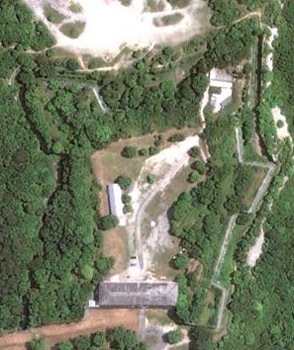
Fort Bregille |
|
"Independent" or not, Besancon and the surrounding region of Franche-Compte continued to fall under the control of various monarchs of France, Spain and Austria, hinging mostly on whom was marrying what princess from which empire. French King Louis XIV (1638-1715) sent his troops to capture Besancon from the Spanish in 1668. The city was returned to Spain within a matter of months, but in the brief French period, the lord and savior of all starfortery, Vauban, came to Besancon and drew up plans for the Citadelle (at the top of this page), which was to sit in the neck of the ox-bow. When the Spanish returned to the city, they found Vauban's plans and gleefully set about building his fort for their own protection. |
|
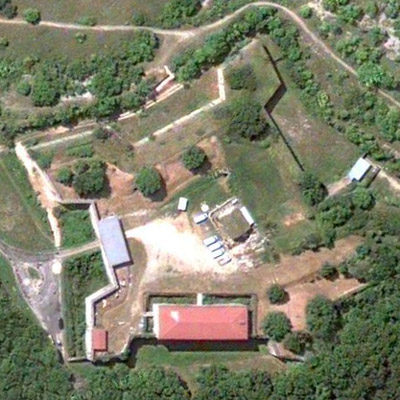
Fort Chaudanne |
 |
French troops took Besancon once again in 1674, and when their possession was made official by a treaty in 1678, Vauban returned to his work there. For the next 30 years, he oversaw construction of the Citadelle and as many as seven other little starrish forties on the surrounding hills: Of those, only Fort Bregille, which sits to the east of the Citadelle, and Fort Chaudanne to the west, are plainly visible as starforts from above today. The others are vaguely visible as collections of fluffy-looking trees. And the name of this site is not FluffyLookingTrees.com.
The Citadelle was, at the time, considered to be the strongest fortification anywhere. It was certainly the most expensive. |
|
So expensive indeed that King Louis reportedly asked Vauban if he were making the Citadelle's walls of gold, to which Vauban probably replied, "stick it, Sun King." A life-sized bronze statue of Vauban today greets those who enter through the main gate of the Citadelle, so obviously the French still liked him even after he had spent all their money on the fort's construction.
The Citadelle was used as a prison and garrison for the next few centuries. During the French Revolution (1789-1799), French Royalists were imprisoned there, as were Austrian, Spanish and French prisoners during Napoleon (1769-1821)'s wars. The Citadelle withstood Austrian attacks in 1814 with little damage.
The Prussians were the next to shoot things at the Citadelle's walls in 1871, again without much in the way of result. During the First World War (1814-1918), Besancon was too far from the fighting to participate directly, though the Citadelle was used in various logistical roles.
The nazis captured the Citadelle in 1940, and from 1941 through 1944 around 100 members of the French Resistance were executed there by firing squad. American troops fought their way into the Citadelle in 1944 and took it back.
The city of Besancon bought the forted land from the French government in 1958 and immediately set about building museums in the Citadelle. Today Vauban's masterpiece starfort contains the Museum of Resistance and Deportation, with exhibits about the region's activity during WW2; the Heritage Identity, which concerns itself with life in the Franche-Compte region and has a large exhibit on Vauban; and the Natural History Museum, which sounds to me an awful lot like a zoo.
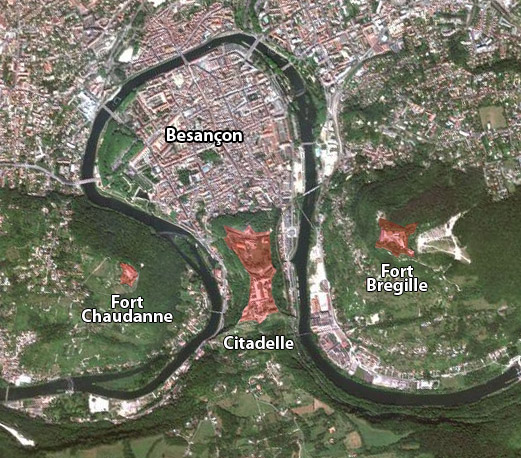 |
|
|  |


